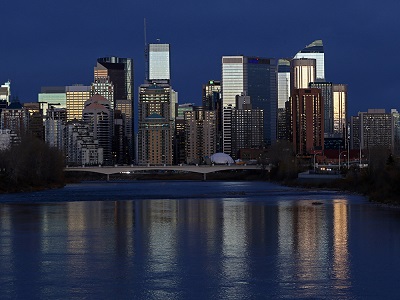 Monday, May 6, 2024
Monday, May 6, 2024  Monday, May 6, 2024
Monday, May 6, 2024 

Several news reports have documented the bleak reality for office vacancy rates in Calgary. According to one CBC report, office vacancy is as high as in 2008, with nearly 28% of offices in the city core vacant. The vacancy rate remains high despite the fact oil prices have rebounded significantly: Western Canada Select was trading at US$52.10 at the end of June, up from a low of only US$16.30 in February 2016
So over a quarter of the offices in Calgary’s downtown are empty, at a time when the oil industry is expected to return to profitability this year, and Canadian Natural Resources, an oil and gas company, is poised to resume growth of its oilsand production? What might account for the lack of regrowth in office vacancies downtown?
Click here to sign-up and receive the Weekly Round Up in your inbox every Saturday
Perhaps because Alberta has chosen to throw away the tax advantage that had helped to draw top talent to Alberta. A recent Fraser Institute study showed that in three areas of tax policy, Alberta long held an advantage over other Canadian jurisdictions: personal income taxes, corporate income taxes and sales taxes. All but the last advantage has been erased.
The researchers note that prior to the Notley government tax policy changes, Alberta’s corporate tax rate was the lowest in Canada. After the changes in 2015, Alberta’s corporate tax rate is just middle of the pack, higher than British Columbia and Ontario, and nearly identical with Saskatchewan, Manitoba and Quebec. This leg of the three-legged stool of Alberta’s tax advantage is long gone.
The Fraser researchers also found that prior to the tax changes, Alberta had the lowest combined federal/provincial/state tax rate out of 60 Canadian and American provinces and states. After the provincial changes (coupled with federal tax policy changes), Alberta’s top personal rate dropped to 46th in that ranking. Make that two out of three advantages gone. Again, the only remaining advantage is the lack of a provincial sales tax.
Keep reading this editorial in the Calgary Sun
Watch our video and learn more about the benefits of joining Construction Links Network – the peer-to-peer network sharing platform for the construction, building and design community.
Press Releases | Project Updates | New Appointments | Awards & Milestones | Company News | New Products/Services | Brochures | Videos | Infographics | Blog Sharing | Events and More